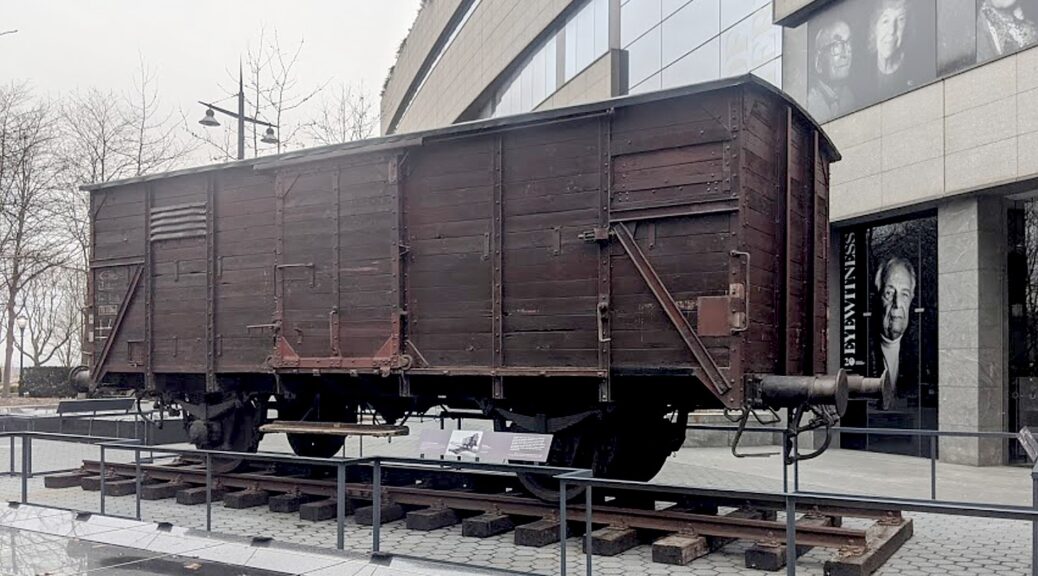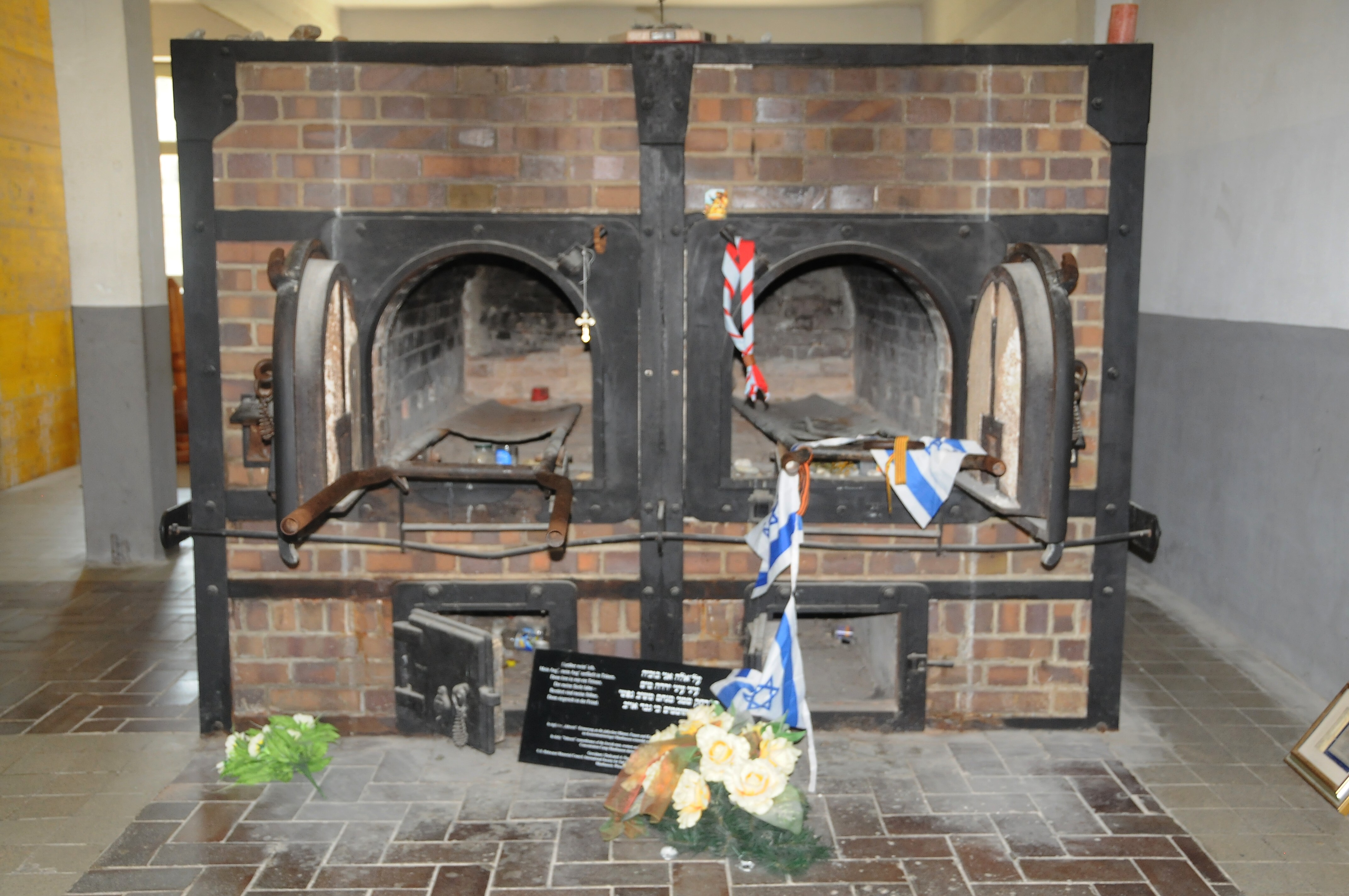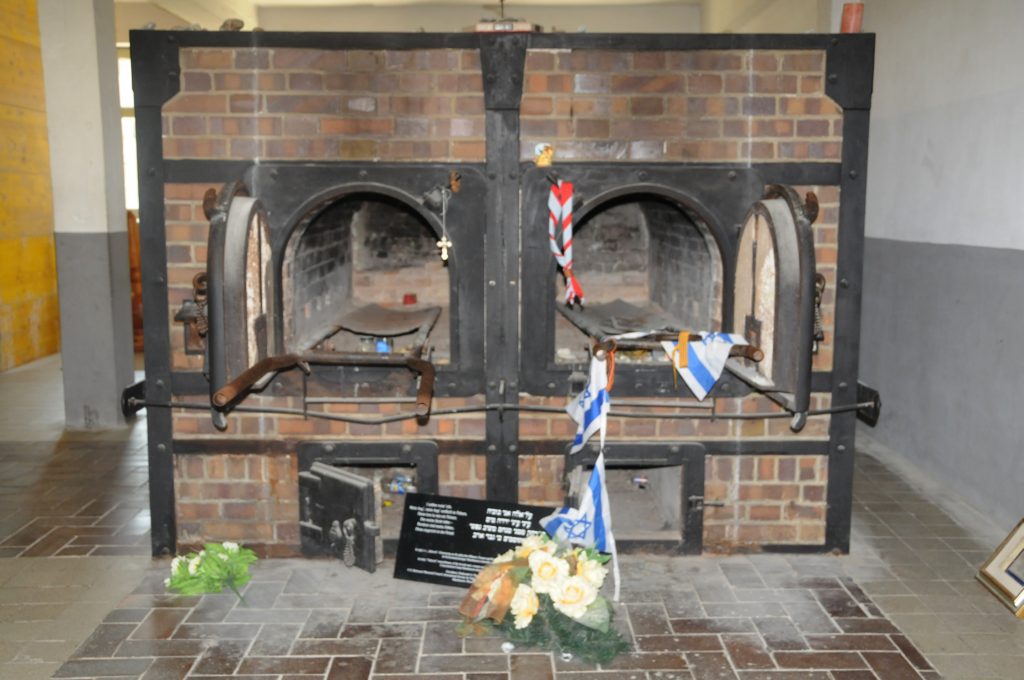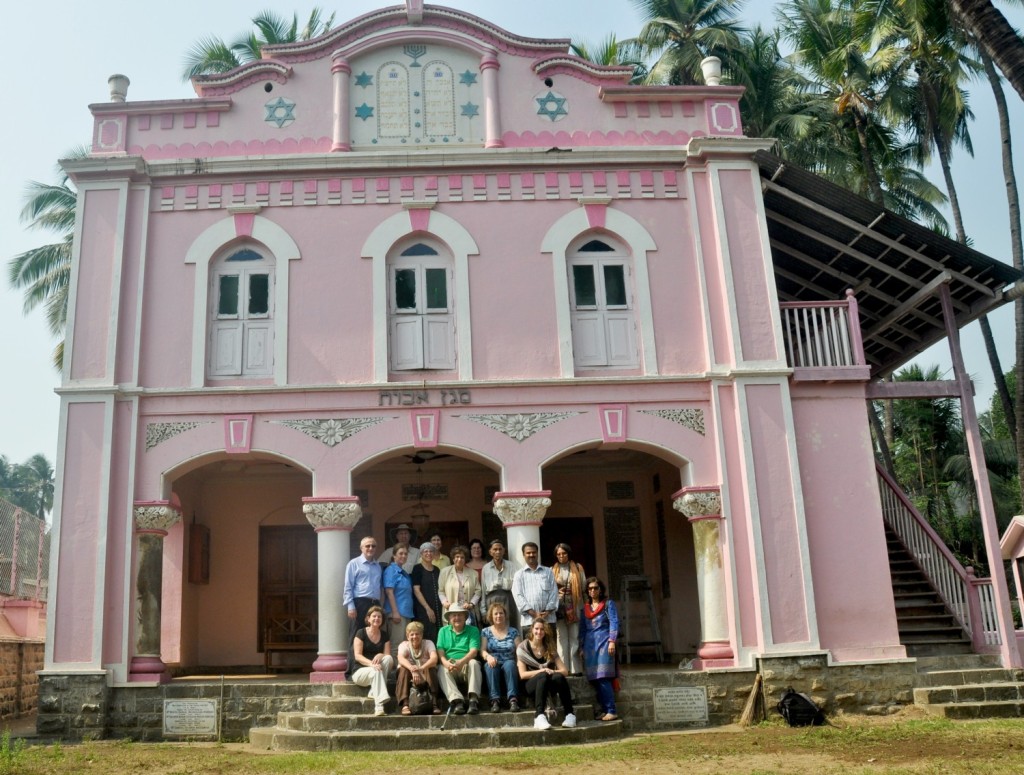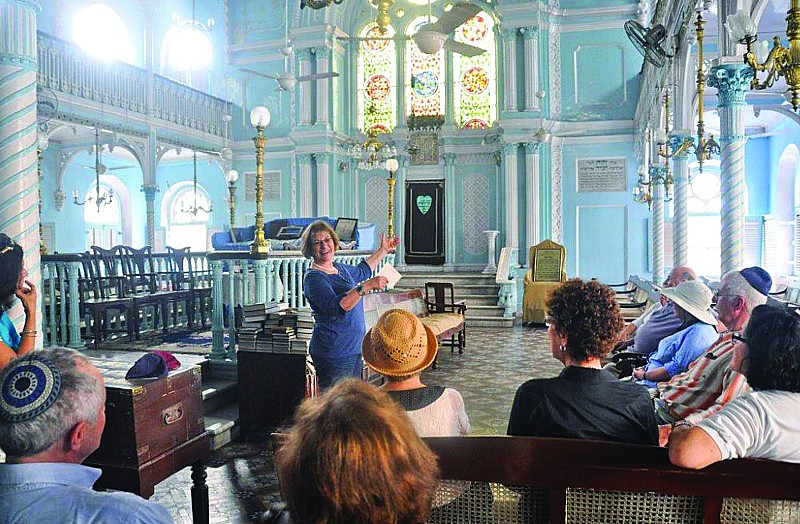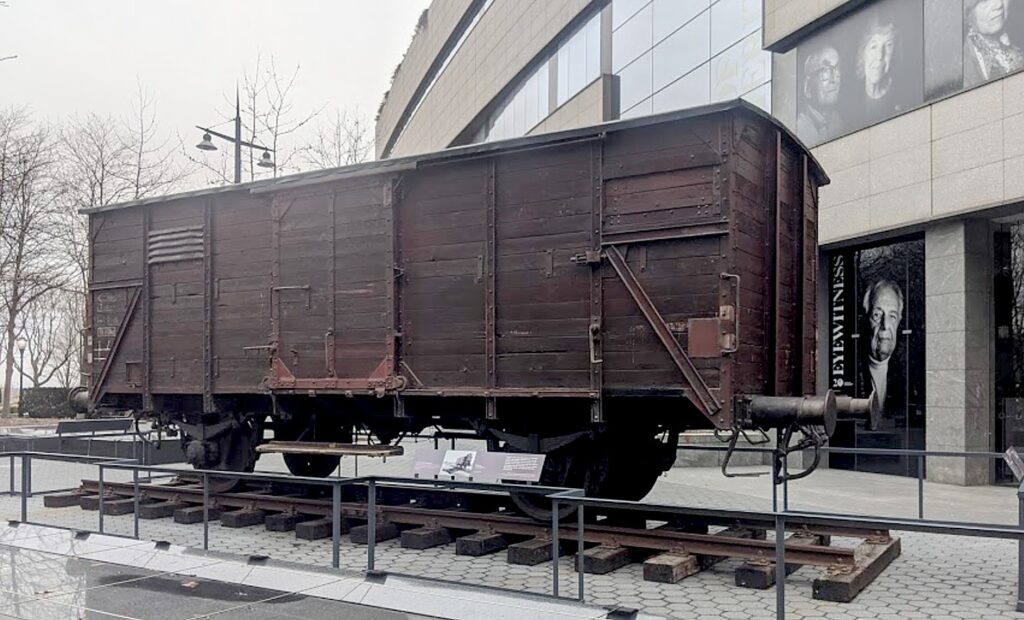
(New York, NY)— This fall, the Museum of Jewish Heritage – A Living Memorial to the Holocaust will present an enriching line-up of in-person and virtual events, including virtual walking tours of historic Jewish sites, launches for four upcoming books about the Holocaust, and a twentieth anniversary 9/11 tribute concert with the Knickerbocker Chamber Orchestra.
“This fall, we’re excited to present an array of programming that will allow our visitors to explore, learn, be entertained, and remember together,” says Museum President & CEO Jack Kliger. “Whether you join us virtually or in-person in our newly renovated Edmond J. Safra Hall, we look forward to offering programs that take you to another place and time and leave you with a new or deeper understanding of Jewish heritage and the Holocaust.”
All in-person events will also be livestreamed and available virtually for audiences around the world.
Fall Highlights include:
- Virtual walking tours that highlight the Jewish history and neighborhoods of major European cities such as Budapest, Berlin, and Amsterdam (September 1 – October 17)
- Book launches for four new nonfiction books that explore Holocaust history: “All the Frequent Troubles of Our Days,” “ We Share the Same Sky: A Memoir of Memory & Migration,” “Into the Forest: A Holocaust Story of Survival, Triumph, and Love,” and “What They Didn’t Burn: Uncovering My Father’s Holocaust Secrets” (August 31 – October 5)
- A special 9/11 tribute concert with the Knickerbocker Chamber Orchestraon the 20th anniversary of the World Trade Center attacks (September 11)
For more information and a full calendar of events, visit the Museum’s events page:
During in-person events, the Museum’s LOX at Café Bergson will be open for brunch, lunch, and
dinner, serving its Museum-made smoked salmon and other kosher delicacies.
Here are event details:
“All the Frequent Troubles of Our Days” Book Talk
Tuesday, August 31, 2021 | 2:00 P.M. ET
(Virtual Event)
Mildred Harnack was an American activist who witnessed the rise of the Nazi Party in Germany and joined what would become the largest underground resistance group in Berlin as the only American in the leadership of the German resistance. She recruited working-class Germans into the resistance, helped Jews escape, plotted acts of sabotage, and collaborated in writing leaflets that denounced Hitler and called for revolution. When the first shots of the Second World War were fired, she became a spy, couriering top-secret intelligence to the Allies. Harnack would eventually get captured and was sentenced to execution by Hitler and was beheaded.
Join the Museum for a program exploring Harnack’s life and legacy with her great-great-niece Rebecca Donner, author of the newly-released book “All the Frequent Troubles of Our Days: The True Story of the American Woman at the Heart of the German Resistance to Hitler”
Virtual Walking Tour: Jewish Budapest
Wednesday, September 1, 2021 | 11:00 A.M. ET
(Virtual Event)
Join the Museum and Our Travel Circle to discover the vibrant history and culture of Jewish Budapest. On this live, virtual walking tour, tour guide Adam will bring visitors through the heart of the historic Jewish quarter of Pest—one of Budapest city center’s most intriguing areas.
“We Share the Same Sky” Book Launch
Thursday, September 9, 2021 | 7:00 P.M. ET
(Virtual Event)
“We Share the Same Sky: A Memoir of Memory & Migration” documents Rachael Cerrotti’s decade-long journey to retrace her grandmother’s Holocaust survival story. The new memoir, scheduled for release in August 2021, explores the pursuit of memory and how the retelling of family stories becomes the history itself.
Join the Museum and Descendants of Holocaust Survivors (2G Greater New York)for a program celebrating the launch of We Share the Same Sky. Cerrotti, who is an award-winning photographer, writer, educator, and audio producer and the inaugural Storyteller in Residence for the USC Shoah Foundation, will be in conversation with Ellen Bachner Greenberg, co-founder of Descendants of Holocaust Survivors.
Remembrance, Reflection, Resilience: A 9/11 Tribute Concert
Saturday, September 11, 2021 | 8:00 P.M.
Edmond J. Safra Hall (In-Person Event)
The Museum of Jewish Heritage and the Knickerbocker Chamber Orchestra present a special concert to commemorate the twentieth anniversary of the events of September 11, 2001. Interspersed with readings of remembrance and reflection, the concert will feature Samuel Barber’s “Adagio for Strings,” the world premiere of Gary S. Fagin’s “9/11 In Memoriam,” Edward Kennedy (Duke) Ellington’s “Come Sunday” featuring the KCO’s Orlando Wells on violin, and other music of uplift and inspiration.
Virtual Walking Tour: Jewish Porto
Sunday, September 12, 2021 | 11:00 A.M. ET
(Virtual Event)
Join the Museum and Our Travel Circle for a live, virtual walking tour in the beautiful coastal city of Porto, Portugal.
Jews have lived in Porto since the 12th century, and the city’s Jewish population was an active part of its business and civic community in medieval times—until the Inquisition forced many into conversion or expulsion.
With our guide Sara, the walking tour will explore some of the old neighborhoods of the ancient Portuguese Sephardic Jews, turned into the boroughs of converted “New Christians.” We’ll also learn the exciting story of the rejuvenation of Porto’s Jewish community during the last century.
“Into the Forest” Book Launch
Sunday, September 12, 2021 | 2:00 P.M. ET
Edmond J. Safra Hall (In-Person Event)
From a little-known chapter of Holocaust history, Rebecca Frankel’s “Into the Forest: A Holocaust Story of Survival, Triumph, and Love” (which will be published on September 7, 2021) is one family’s inspiring true story of love, escape, and survival.
In the summer of 1942, the Rabinowitz family narrowly escaped the Nazi ghetto in their Polish town by fleeing to the forbidding Bialowieza Forest. They miraculously survived two years in the woods―through brutal winters, Typhus outbreaks, and merciless Nazi raids―until they were liberated by the Red Army in 1944.
During the first ghetto massacre, Miriam Rabinowitz rescued a young boy named Philip by pretending he was her son. Nearly a decade later, a chance encounter at a wedding in Brooklyn would lead Philip to find the woman who saved him. And to discover her daughter Ruth was the love of his life.
Join the Museum for a program celebrating the launch of Into the Forest with Frankel and David Rothkopf, host of the Deep State Radio podcast and CEO of The Rothkopf Group.
Stories Survive: Dr. Rene David Alkalay
Tuesday, September 14, 2021 | 2:00 P.M. ET
(Virtual Event)
Dr. Rene David Alkalay was born in March 1941 in Zagreb, the capital of the former Yugoslavia (now Croatia). When Dr. Alkalay was just a few weeks old, Croatia became a puppet state of Nazi Germany and Fascist Italy, and his father and paternal relatives were imprisoned in a concentration camp run by the country’s new Ustaša regime. Later that year, Dr. Alkalay, his mother, and his maternal relatives were imprisoned in other Ustaša-run concentration camps, where they remained for two years.
After the camp was liberated, Dr. Alkalay hid in the forest with partisan groups for a year and then was airlifted out of Yugoslavia to a Displaced Persons camp in Italy. He spent four years after the war at a Catholic school in Rome, unaware of his true religious identity.
In 1950, Dr. Alkalay and his family emigrated to the United States, where he later became a psychotherapist, nutritionist, and pastoral counselor. Join the Museum for a program exploring Dr. Alkalay’s story of survival in Croatia.
“Truus’ Children” Screening and Discussion
Sunday, September 26, 2021 | 2:00 P.M. ET
(Virtual Event)
In December 1938, Dutch social worker Truus Wijsmuller was invited to a meeting with Nazi official Adolf Eichmann regarding the transportation of Jewish children out of Nazi territory. With Eichmann’s permission, she quickly organized 600 Jewish children in Vienna and helped transport them to safety in England and the Netherlands. She then continued organizing transports for the next 18 months, becoming a central figure in the rescue network known as the Kindertransport. In total, the Kindertransport saved the lives of approximately 10,000 children.
Join the Museum and the Netherlands’ diplomatic network in the US for a virtual screening and discussion of Truus’ Children, a new film from Dutch filmmakers Pamela Sturhoofd and Jessica van Tijn exploring Wijsmuller’s remarkable legacy. As it tells Wijsmuller’s story, the film also probes the question of why Wijsmuller has been largely forgotten in the 75 years since the World War II.
This program will feature an exclusive panel discussion with Sturhoofd, van Tijn, and Ilse Bauer-Langsdorf, one of the children saved by Truus Wijsmuller. The discussion will be moderated by Michael Simonson, Head of Public Outreach and Archivist at the Leo Baeck Institute.
Jewish Multiverse: Judaism and Superheroes
Thursday, September 30, 2021 | 7:00 P.M. ET
(Virtual Event)
Since the first Superman comic was published in 1938, there has been a persistent fascination with superheroes. Today, we see them everywhere: television, movies, comics, toys, and anywhere else one can think of. Jews have played an important role in superhero culture, both as characters and creators.
Join the Museum for a program exploring Jewish superheroes with comic book writer Marguerite Bennett (DC Bombshells) and editor Danny Fingeroth (Marvel’s Spiderman Comics Line). They will be in conversation with journalist Abraham Riesman, author of True Believer: The Rise and Fall of Stan Lee.
Powerhouse Jewish Women: Isle of Kiezbos & Stephanie Lynne Mason in Concert
Sunday, October 3, 2021 | 3:00 P.M.
Edmond J. Safra Hall (In-Person Event)
Celebrate Jewish women’s music at this energetic Isle of Klezbos concert, held live in the Museum’s Edmond J. Safra Hall.
This soulful, fun-loving powerhouse all-women’s klezmer sextet has toured from Vienna to Vancouver since 1998. The band, led by drummer Eve Sicular, approaches tradition with irreverence and respect and is known for its tight yet adventurous sound, lush arrangements, luscious compositions, and solos that swing the Yiddish stratosphere. The band also includes Pam Fleming on trumpet,Reut Regev on trombone, Melissa Fogarty on vocals, Shoko Nagai on accordion and piano, and Saskia Lane on double bass.
Isle of Klezbos will be opened by Broadway actress and singer Stephanie Lynne Mason, known for her leading roles in Fiddler on the Roof and Fiddler on the Roof in Yiddish, accompanied by Bob Marks on piano.
“What They Didn’t Burn” Book Launch
Tuesday, October 5, 2021 | 7:00 P.M. ET
(Virtual Event)
Growing up, author Mel Laytner saw his father as a quintessential Type B: passive and conventional. As he uncovered documents the Nazis didn’t burn, however, another man emerged—a black market ringleader and wily camp survivor who made his own luck. The tattered papers also shed light on painful secrets his father took to his grave.
Melding the intimacy of personal memoir with the rigors of investigative journalism, “What They Didn’t Burn: Uncovering My Father’s Holocaust Secrets” is a heartwarming, inspiring story of resilience and redemption. A story of how desperate survivors turned hopeful refugees rebuilt their shattered lives in America, all the while struggling with the lingering trauma that has impacted their children to this day.
Join the Museum for a conversation with Laytner and Jane Eisner, Director of Academic Affairs at the Graduate School of Journalism at Columbia University and former editor-in-chief of The Forward, about “What They Didn’t Burn.”
Virtual Walking Tour: Jewish Berlin
Wednesday, October 6, 2021 | 11:00 A.M. ET
(Virtual Event)
Join the Museum and Our Travel Circle for this live, virtual walking tour of one of Berlin’s oldest neighborhoods. There will be an exploration of areas where Berlin’s Jewish community once flourished and explore how its tragic history is being memorialized today.
Led by tour guide Martin, the tour will begin at the Jewish Boy’s School, then head to the oldest Jewish cemetery in Berlin and the neighboring location of the Jewish retirement home. All three sites were seized by the Nazis. There will also be stops at the haunting memorial sculptures by German artist Will Lammert, the New Synagogue built in 1866, and Museum Island—a UNESCO World Heritage Site in the heart of the city.
Introduction to the Holocaust
Thursday, October 7 – November 4, 2021 | 5:00 P.M. ET
(Virtual Event)
Join the Museum for a virtual adult education course offering an introduction to the Holocaust. The five-part course will meet weekly on Thursdays from 5:00 to 6:30 PM ET. Each class will include a full lecture followed by student Q&A.
The first four sessions will be led by Dr. Avinoam Patt, the Doris and Simon Konover Chair of Judaic Studies and Director of the Center for Judaic Studies and Contemporary Jewish Life at the University of Connecticut. Dr. Patt is a former research scholar at the U.S. Holocaust Memorial Museum and has published extensively about Jewish life in Europe before, during, and after the Holocaust.
The fifth session will feature Maritza Shelley, a Holocaust survivor from Budapest, Hungary. Shelley survived forced labor and a Nazi death march when she was a teenager. Along with her mother and sister, she eventually escaped, obtained false papers, and hitchhiked back to Budapest with a convoy of Nazis. Shelley emigrated to New York City in 1947.
Wallenberg: A Musical Tribute
Thursday, October 7, 2021 | 7:00 P.M. ET
Edmond J. Safra Hall (In-Person Event)
“Wallenberg,” an epic new musical with book and lyrics by the 2006 Kleban Award-winning team of Laurence Holzman and Felicia Needleman and music by Benjamin Rosenbluth, brings the incredible true story of Raoul Wallenberg, one of the greatest unsung heroes of the 20th century, vividly to life.
In July 1944, the 32-year-old Wallenberg, a businessman from Stockholm, left the safety of neutral Sweden on an American-sponsored mission to Nazi-occupied Hungary. Between face-offs with the notorious Adolf Eichmann and secret dealings with the wife of one of Hungary’s most prominent fascist leaders, Wallenberg saved over 100,000 lives—more than were rescued by any other individual during the Holocaust.
Join the Museum for an evening with the creators and actors behind “Wallenberg,” who will explore the Wallenberg story and perform a set of exhilarating and richly melodic songs from the musical’s score.
Virtual Walking Tour: Jewish Odessa
Sunday, October 10, 2021 | 11:00 A.M. ET
(Virtual Event)
Join the Museum and Our Travel Circle for a virtual stroll through Odessa’s old town and uncover the story of Odessa’s Jewish community.
Tour guide, Olga, will be live on the streets of Odessa sharing her city’s rich Jewish heritage. She’ll showcase sites from the golden age of the city’s Jewish community, focusing on the time from the city’s founding through the 1860s and exploring the identities and motivations of Odessa’s early Jewish settlers.
Attendees will see the Brodsky Synagogue, talk about the powerful Ephrussi family, follow in the footsteps of the prominent Jewish revolutionary Ze’ev Jabotinsky, and see the beautiful mansions that were once home to Jewish merchants in the early 1800s.
Virtual Walking Tour: Jewish Amsterdam
Wednesday, October 13, 2021 | 11:00 A.M. ET
(Virtual Event)
Join the Museum and Our Travel Circle to travel back in time to learn about Amsterdam’s Jewish history on this live, virtual walking tour with tour guide Stephan.
Stephan will explore the city’s historic Jewish Quarter, explaining how Amsterdam became a safe haven for Jews fleeing southern and eastern Europe starting in the 16th century, and why 10% of its population was Jewish at the onset of the Holocaust.
The tour will include stops at the two Amsterdam synagogues and its famed Jewish memorial. Attendees will also see the city’s oldest park, the Hortus Botanicus—a botanical garden established in 1638—and Steohan’s favorite street in Amsterdam. Discover history through a walk along the canals.
Virtual Walking Tour: Jewish Prague
Sunday, October 17, 2021 | 11:00 A.M. ET
(Virtual Event)
Join the Museum and Our Travel Circle to explore the historic Jewish community of Prague, in the Czech Republic.
On this live, virtual walking tour, attendees will learn the history of the Jewish community in Bohemia since the 10th century with our guide Nikola. They will visit several synagogues: the Maisel Synagogue, the Pinkas Synagogue, and the Old New Synagogue—Europe’s oldest synagogue still in use.
The tour will explore the impact of World War II and the German annexation of Czechoslovakia through the Stolpersteine (stumbling stones) and the Terezin Ghetto. Learn the story of Nicholas Winton, the British businessman who saved 669 children with his rescue mission. And finally, attendees will hear the story of the American ambassador’s residence in Prague—the spectacular Petschka Palace.
Love in Wartime
Thursday, November 4, 2021 | 7:00 P.M. ET
(Virtual Event)
Love stories during the Holocaust are as inspiring as they are remarkable. In photographer Max Hirshfeld’s new book Sweet Noise: Love in Wartime, he offers an intimate look at one of these stories through powerful photographs, a series of emotional love letters between his parents, and the narrative of a son’s pilgrimage exploring his origins.
Join the Museum for a program exploring Hirshfeld’s work with the photographer and Jacqueline Kott-Wolle, a fellow artist and daughter of Holocaust survivors. Hirshfeld and Kott-Wolle will explore different forms of love, expression, and the idea that Jewish trauma and hardship did not end after the war.
The Light and Legacy of Rachel Cowan
Thursday, November 4, 2021 | 6:45 P.M.
(In-Person Event)
Rachel Cowan was a civil rights activist, community organizer, the first female Jew by choice ordained as a Rabbi, and a beloved and influential mindfulness teacher. After she was diagnosed with aggressive brain cancer, her years of mindfulness practice enabled her to model living well while dying. Join the Museum of Jewish Heritage and the Institute for Jewish Spirituality, and presenting partners B’nai Jeshurun and the Marlene Meyerson JCC Manhattan, for an evening celebrating the remarkable light and legacy of Rachel’s life.
The program will feature a screening of Dying Doesn’t Feel Like What I’m Doing, a new film about Cowan from American-born, Jerusalem-based documentary filmmaker Paula Weiman-Kelman. The film will be followed by a panel discussion with Weiman-Kelman, Khary Lazarre-White, Executive Director & Co-Founder of the Brotherhood Sister Sol, and Jeannie Blaustein, Founding Board Chair at Reimagine End of Life. The discussion will be moderated by Rabbi Marc Margolius, Senior Program Director at the Institute for Jewish Spirituality.
The Museum of Jewish Heritage – A Living Memorial to the Holocaust is New York’s contribution to the global responsibility to never forget. The Museum is committed to the crucial mission of educating diverse visitors about Jewish life before, during, and after the Holocaust. The third largest Holocaust museum in the world and the second largest in North America, the Museum of Jewish Heritage anchors the southernmost tip of Manhattan, completing the cultural and educational landscape it shares with the Statue of Liberty and Ellis Island.
The Museum of Jewish Heritage maintains a collection of almost 40,000 artifacts, photographs, documentary films, and survivor testimonies and contains classrooms, a 375-seat theater (Edmond J. Safra Hall), special exhibition galleries, a resource center for educators, and a memorial art installation, Garden of Stones, designed by internationally acclaimed sculptor Andy Goldsworthy. The Museum is the home of National Yiddish Theatre Folksbiene.
The Museum receives general operating support from the New York City Department of Cultural Affairs and New York State Council on the Arts.
The Museum is closed on Saturdays, Jewish holidays, and Thanksgiving.
Museum of Jewish Heritage – A Living Memorial to the Holocaust, 36 Battery Place, New York City, 646-437-4202, mjhnyc.org.
See also:
For more travel features, visit:
goingplacesnearandfar.wordpress.com
www.huffingtonpost.com/author/karen-rubin
travelwritersmagazine.com/TravelFeaturesSyndicate/
goingplacesfarandnear.tumblr.com/
instagram.com/going_places_far_and_near/
‘Like’ us on facebook.com/NewsPhotoFeatures
Twitter: @TravelFeatures
